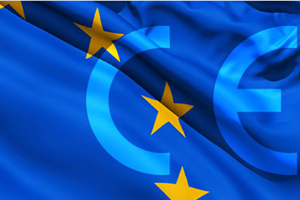
The CE mark of conformity came to the fore with the New Approach policy adopted in 1985. This mark is a sign of conformity with EU legislation which indicates that the products covered by the New Approach Directives comply with the relevant directives and have passed all the required conformity assessment activities. The CE mark is an unity mark that indicates that a product complies with the health, safety, and environmental protection requirements set out in the European Community directives.
The CE marking does not provide quality assurance to the consumer, only indicates that the product has the minimum safety requirements. A product bearing the CE mark enters into free circulation between the member states of the European Union, thus the mark also functions as a “product passport”. It is not possible to reject a product with a CE mark from the European Union and EFTA countries with legal justifications for the standards. The CE mark is a symbol indicating the conformity of the product to the Community technical legislation.
Initially, the CE marking was used to form the initials of the words uygunluk Conformité Europeenne ”, ie European conformity, followed by the initials of the words“ Community Europe “. The CE marking affixed to the product is the declaration by the responsible person that the product complies with all relevant community provisions and that the necessary conformity assessment procedures have been completed.
The CE marking, a mandatory mark, must be affixed to the product before the product is placed on the market or put into service by the manufacturer. Unless otherwise specified in the relevant technical regulation, it shall consist of CE letters at least five millimeters in length and may be reduced where permitted in the relevant directives. This marking attached to the product or information plate; must be visible, readable and indelible.
If a product with the CE marking causes harm to the life and property of the consumer or the environment, a penalty of 7 thousand euros to 70 million euros shall be imposed on each product. In addition, products with the CE conformity marking may include a mark indicating another category of use.
CE Marking System has a modular understanding with conformity assessment methods that takes into consideration the characteristics of the products and the risk ratios they carry. In this system, it is mandatory to apply at least one of the modules to determine compliance with the relevant directives during the design and production stages of the product.
These modules cover various risk groups from A to H. Each module has classified the product according to the degree of danger. The testing and certification studies required for conformity assessment for low risk products are carried out by the manufacturer. In the case of high-risk products, these studies are carried out by organizations approved by the European Union.
Obtaining a CE certificate requires the manufacturer to prepare a technical dossier that includes the New Approach Directives and information indicating that the product complies with the essential requirements. This dossier may be part of the quality system documentation where the directive provides for a conformity assessment procedure based on a quality system. This obligation starts at the moment the product is placed on the market regardless of its geographical origin.
The technical dossier must be kept for at least 10 years from the date of manufacture of the product, unless the relevant directive explicitly provides for another period. This is the responsibility of the manufacturer or his authorized representative within the Community. In some cases, it is the importer or the person who supplies the product to the Community market.
As mentioned above, CE marking is not authorized for low-risk products. The manufacturer declares that the product is in compliance with the basic requirements and puts the CE marking on the product itself. In this respect, the responsibility is great. Therefore, they must carry this responsibility without disrupting the principle of trust.
A large number of cases are still pending before the European Union courts, where the conformity is declared and CE marked but not found to meet the basic requirements and which are collected from the market.
The CE mark, which is the manufacturer's declaration of product safety guarantee and also referred to as the product's passport, is not a quality certification. CE marking; the product on which it is located; human, animal, phytosanitary and safety and the environment, and ensures that a single mark is used throughout the European Economic Area.
The CE mark, which is extremely important for consumers, makes it easier for consumers to identify products that are classified as safe by the community, and products bearing this mark demonstrate compliance with packaging, labeling and safety-related standards to ensure high quality products to consumers.
For more information, you can reach our expert team from our contact addresses and phone numbers and you can get answers to all your questions.